After spending a rainy, cold night at an alpaca farm in Unity, ME, we stopped for breakfast in rainy, cold Bangor.
NEST CAFE
Parking Big Blue along the steep hills and narrow streets of this old city was a challenge. But we got it done. Then we walked through the rain to the Nest Cafe near the river. The cafe was doing a lively business and had an alternative vibe. A poster in the window advertised an upcoming production in the theatre of the absurd.
We ordered at the counter — lox and bagel for Doug, avocado toast with eggs for me.
After we finished eating I discovered that the only toilet in the place did not flush adequately. That did not surprise me. Meanwhile Doug stood in line to get me an Americano decaf to go.
PAWN SHOP
On the way back to the truck, we stopped at a pawn shop. A sticker on the door said “Hell No, Joe!” over the outline of an assault weapon.
The elderly man running the place shuffled to the door to unlock it for us, then returned to his comfortable seat, watching reruns of “Two and a Half Men.” Doug asked about a stuffed duck hanging in the window, but was told it wasn’t for sale. “The Feds come after you for that. It’s a big deal,” said the old man. I inquired about the price of some turquoise rings, and he quoted $100. I had no desire to line this gent’s pockets.
Apparently, we just spent an hour inhabiting a Richard Russo novel, a place of eccentric characters in an old town where it rains frequently and hope is at a low ebb.
DRIVING TO THE BORDER
The drive from Bangor to the Canadian border at Calais was drizzly. The hilly terrain offered very little besides trees — mostly deciduous, many in bloom, and all weighted down by rain.
The largest employer in Maine must be highway maintenance. Their bullet shaped silos are the only sizable structures we saw along the road. That people here are scratching out an existence is evident in large wood piles, single-wide trailer homes, and rusted out vehicles.
We encountered very little traffic and no semi-trucks at all. MAGA has been successful in shutting down commerce between the US and Canada.
Just before reaching the border we gassed up at the Irving in Baileyville. The border crossing was smooth. Only one window of the six bays was open, and there was still no wait at all. There were no cars going the opposite direction.
The clock said it was just after 1:00 but we had crossed into Atlantic Time and jumped ahead an hour.
ST. JOHN, NEW BRUNSWICK
The roads in New Brunswick seem to sit at a higher elevation — they’re much windier. The place names are multisyllabic and fun to pronounce, such as Piskahegan, Pocologan and Pasamaquoddy.
We arrived in St. John around 3:30 with the intention of stopping for a meal. But we spent a good 30 minutes looping around on bridges and frontage roads, trying to follow directions to restaurants which also provided a place to park our rig.
We passed an enormous pulp and paper mill run by Irving, freight train lines, and towering cranes used to load ships. With it’s sprawling harbor and steep hills, this city reminded us both of Duluth, MN.
Eventually, we ended up in the downtown area, looking for a seafood restaurant called Grannan‘s. It was housed alongside a dock in a long brick building of connected restaurants, each with a covered patio beside an open-air pavilion. I was puzzled by the lack of parking until it dawned on me that cruise boats anchor here. I could easily imagine the outdoor areas filling up with buskers and tourists in the summer months.
Apparently cruise season hadn’t yet begun, and besides that it was low tide. St. John is famous for the extremity of its tides.
When we entered the restaurant, we passed a table of four local men playing cards. I asked one who was winning. He shook his head and said “they are.“
We were seated in an upstairs dining room beside a window overlooking the water. When we asked, our waiter told us that three cruise boats visit daily, each with 2,000 people onboard. One hundred cruise boats per year. Obviously these boats are a growing part of the St. John economy.
We ordered seafood chowder as a starter, followed by mussels prepared in coconut milk for Doug, and fried clams for me. All the food was delicious. I don’t think I’ve had fried clams since the last time I was in New Brunswick, since you can’t get good clam bellies just anywhere. A rare treat.
After the meal we walked along the dock and noticed how much the area has changed. We reminisced about other times we’ve visited St. John. Twice on Carnival Cruises with our family of four, 2003 and 2004. Once on a car camping trip with just the two of us, on our way to PEI and Nova Scotia, 2010.
So we’ve had a chance to do the tourist things. In 2003 we saw the reversing falls and took a jet boat ride, which our daughters really enjoyed. In 2004 we bought seaweed in the large marketplace, which is in the category of things we never have to do again. In 2010 we camped on a nearby pebble beach and hiked coastal trails.
This visit we were content to simply eat seafood, then be on our way.
ON THE ROAD
By 5:15 we were headed to our Harvest Host for the night, Sussex Craft Distillery. The rain had stopped, and the thick cloud cover was merely white and light gray, as opposed to heavy gray. We counted that as a win.
We arrived at the distillery at 6:00 and discovered that it was a small place, locked up until the next morning. It only had two reviews on Harvest Host, so I assumed it was new. We saw construction underway on the side of the building alongside Highway 1. The gravel area beside the distillery was nice and level, so we parked there.
SUSSEX CRAFT DISTILLERY
I walked circles around the parking lot to get in some steps before it got dark. I noticed that a vehicle arrived, and someone disappeared into the building. So I opened the door and yelled Hello. A man approached me with his hand outstretched saying “Hello Ruth! I saw you getting your steps in as I went past on the highway. And I thought to myself, that’s Ruth.”
He of course was our Harvest Host. Greg McCollum had come by to unload some items and check whether we’d arrived. I commented on the construction project and he happily gave us a tour of what’s underway — an outdoor venue for live music. Their opening night is set for June 27.
Greg and eight other partners started this distillery in 2017. You can read the interesting back story on their website.
“It was impossible to decide anything with nine people on board. Now we’re down to five.” I teasingly asked whether Doug and I should be out looking for four bodies. He replied seriously that they all dropped out for some reason. But one of his partners would be showing up soon.
When Greg heard that we were headed to Newfoundland, we had a long and lively conversation about that province. Meanwhile his buddy Chris Celeste showed up and we continued to talk about the distillery and our trip.
One funny thing Chris told us is that Newfoundlanders like to camp in gravel pits. He said “I’m always telling my buddies, you live in such a beautiful province and could stop at the side of the road anywhere and have a beautiful view, but instead you camp in gravel pits.”
We went inside and Chris gave us a thorough tour of their distillery. The process begins with water cubes where they mix ingredients, and then three copper distillation stills. He explained the operation of each of the three tanks in detail, then interrupted himself to say: “It’s really not hard to make liquor,” which made me laugh. Most distilleries and wineries go to great lengths to convince you that their art form is complicated and has only been perfected over centuries of trial and error.
During Covid, the distillery switched to making hand sanitizer. Chris said that he would work a full time job from home all day, then would come into the distillery to make hand sanitizer from 6:00 till midnight. It’s actually just as much work to make as spirits, and the concentration has to be high enough to be effective. I asked if he at least made decent money doing that, and he said “Oh yes.” Then caught himself. He said the business made money. “We weren’t paying ourselves at that point.”
Now they create three products: rum, rum liqueur, and liqueur. He explained the differences between these three products, and talked about flavorings. He showed us some large metal containers with holes. These function like tea balls to steep the liquor with flavorings. As for which flavorings to use, those sometimes depend on what’s growing in Chris’ garden. One time he had an abundance of lemon cucumber, which is an unusual gourd-like vegetable. They discovered that it makes delicious liqueur.
They also experimented with cranberry, which was a failure until someone reminisced about his grandma’s meatloaf and cranberry orange sauce. Which gave them an idea. When they added orange peels to the cranberry, they had a winner.
When the tour was over, we got to sample some liqueurs, of course. I could see the appeal of his top selling rum liqueur — maple. We also really enjoyed the lemon liqueur, which was similar to limoncello. And Doug liked an anise liqueur called Dutch Valley.
We were happy to support the distillery with a substantial purchase. I stowed the bottles in among the socks in our underwear cubby.
EDITED: A subscriber kindly informed me that it’s “St. John’s, NL” and “St. John, NB.” Good to know!



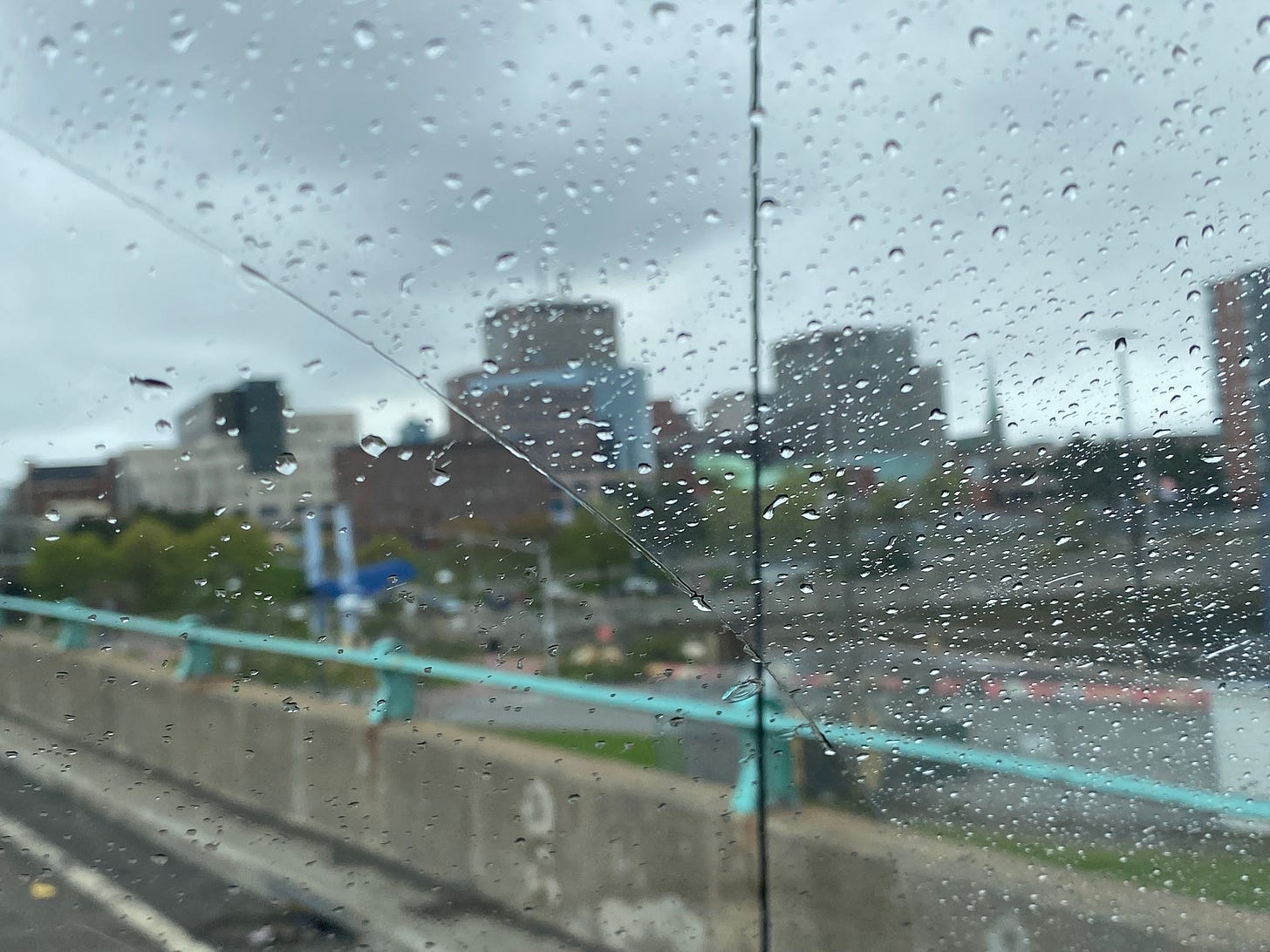
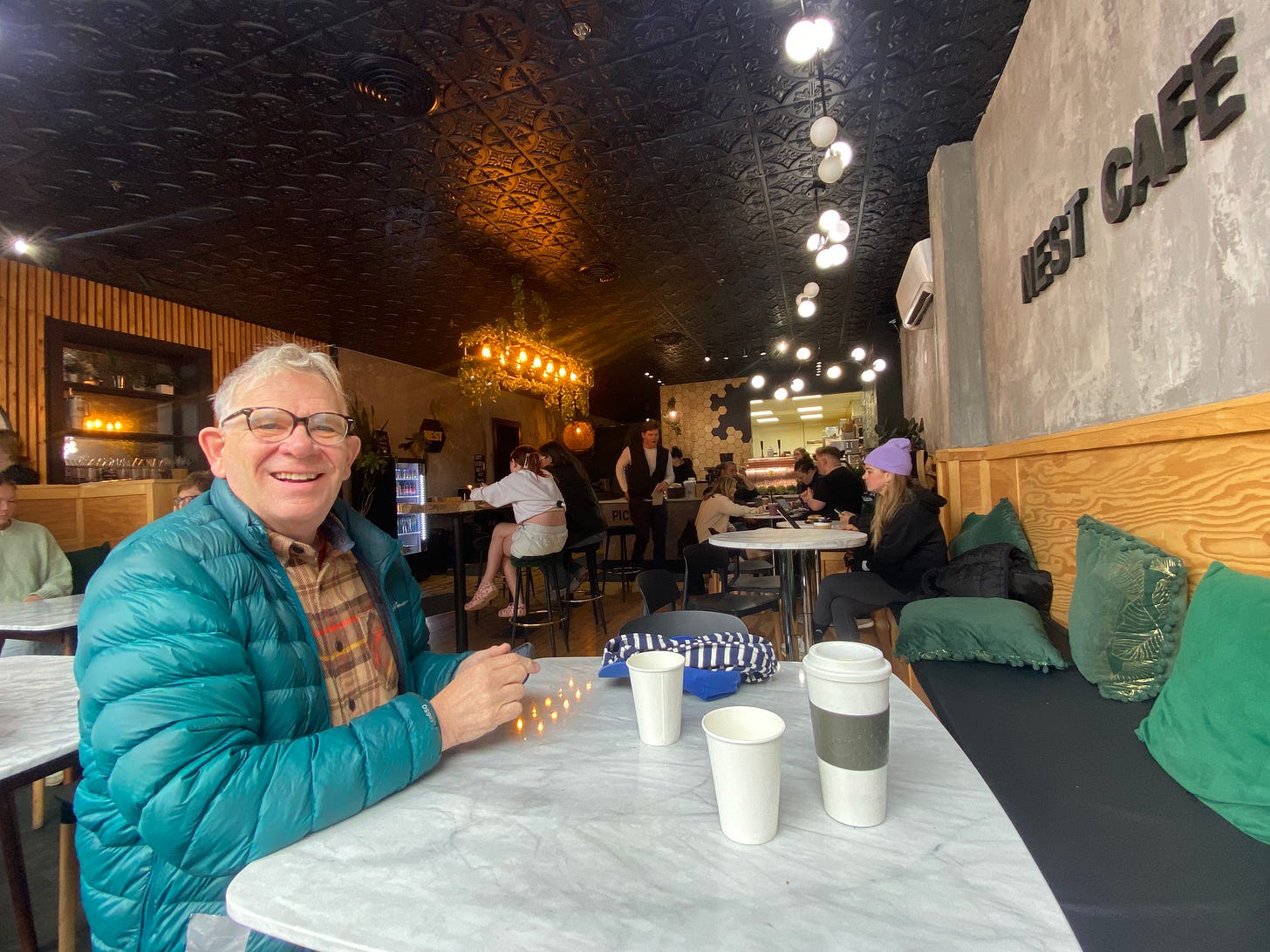
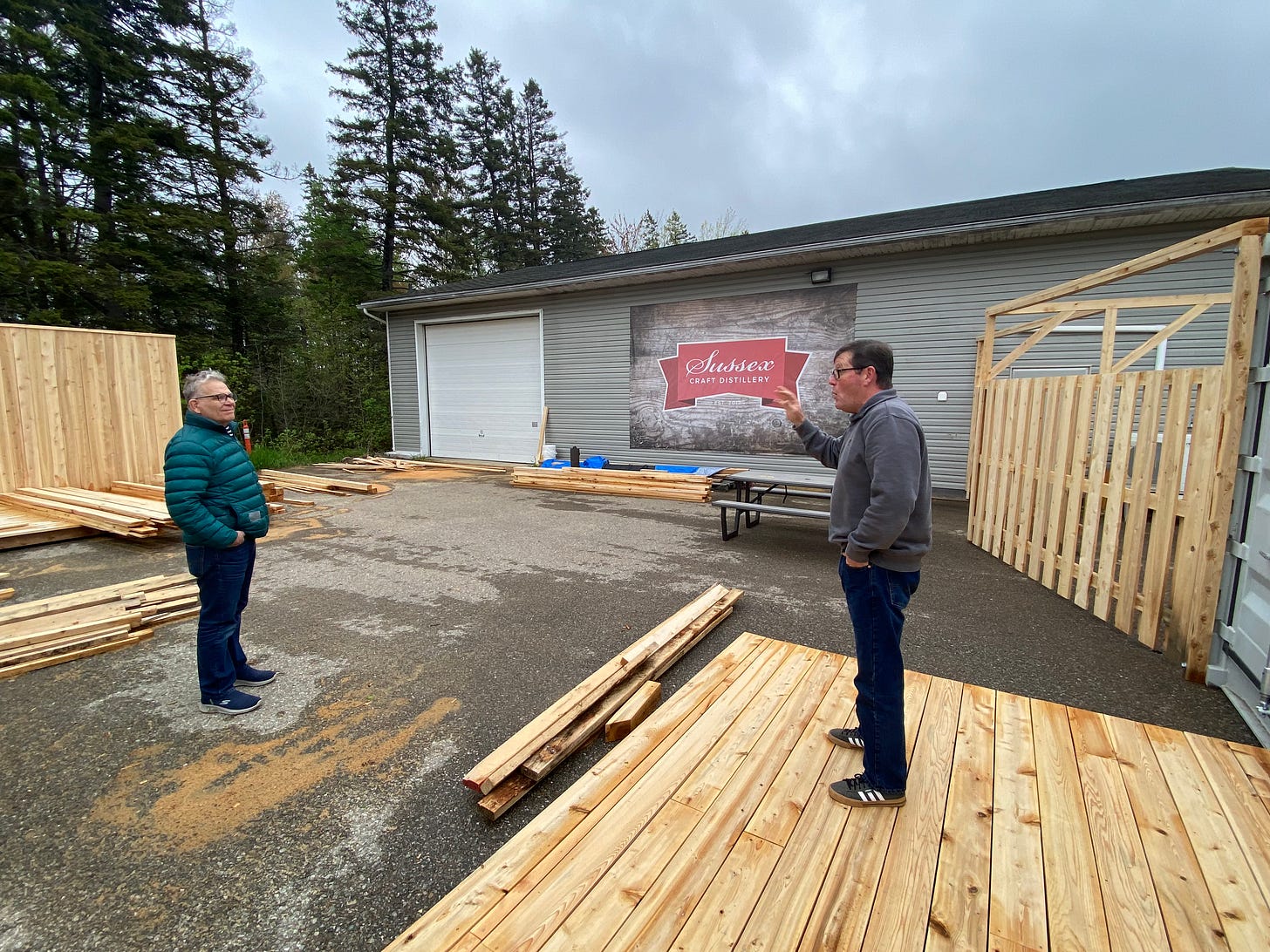
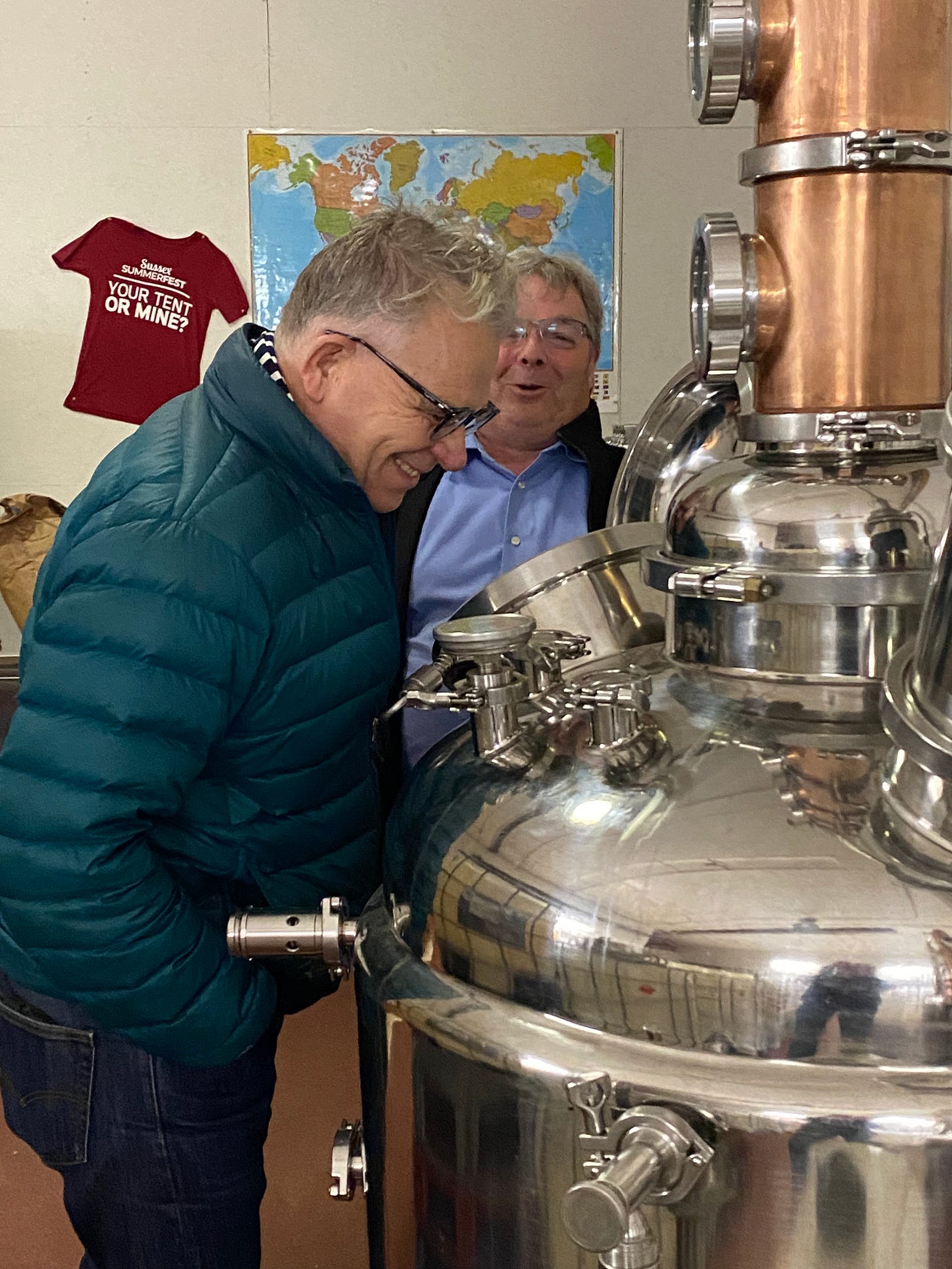
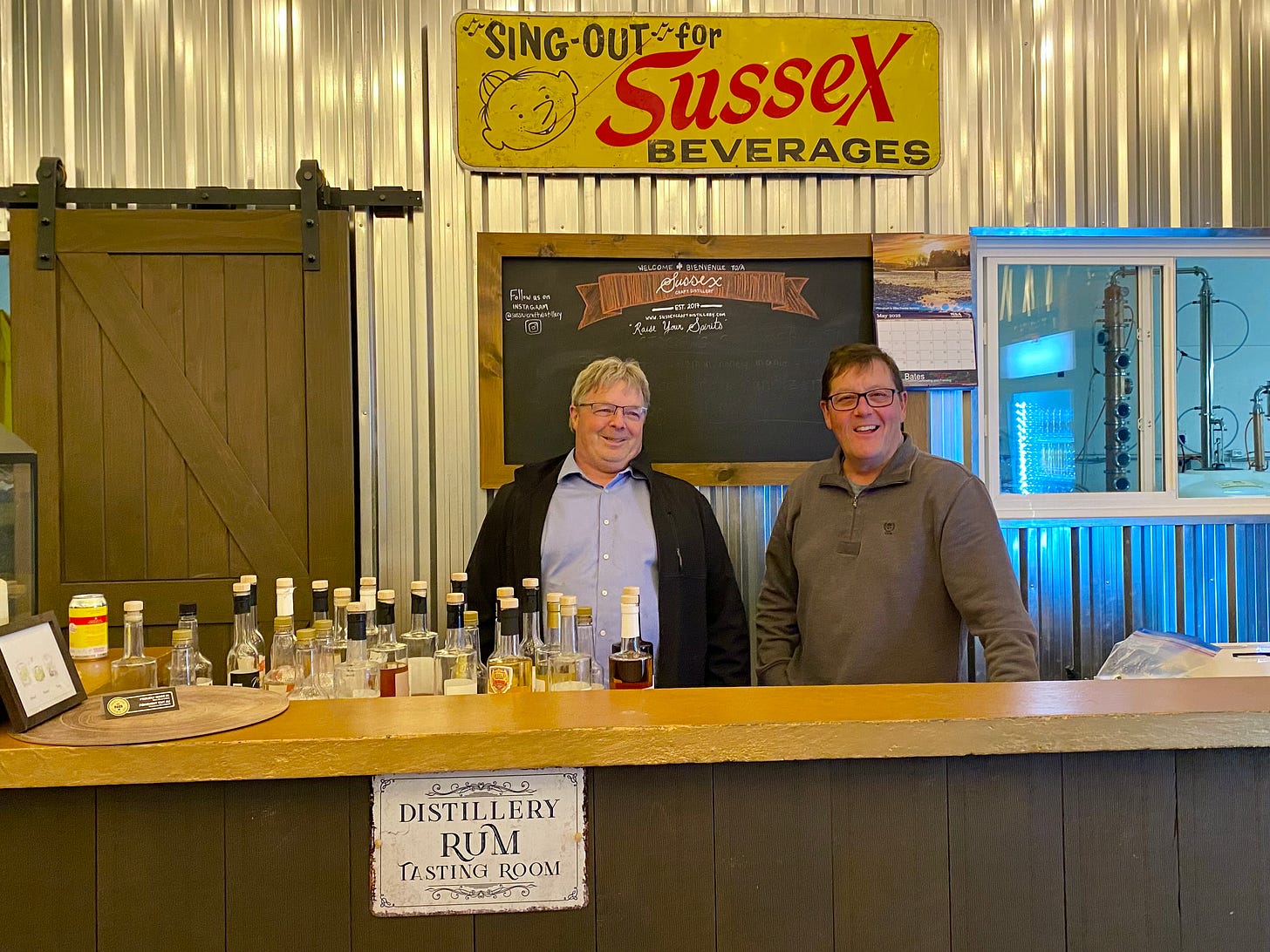
I’ve spent the morning catching up on your posts - and love to read about your journey. I thought of doing this because last night you were in my dream, Ruth. You were living in a city and had a lot going on. One day you said, “Come on Anne, I’m going to go paint - you’ll like this place.” You ran ahead - and for some reason - it took me quite a while to get there. Once I arrived, I realized I didn’t have my glasses which really slowed me down. But I could see what you were doing very clearly. The paintings were done on the inside of large plate glass windows of the street level of a modern loft like building. There were others there, too, walking the warmly lit corridor, with the glass on which you were painting on one side, to their apartments or offices. The paintings were airy, abstract, colorful and filled with movement and life - and your face was beaming with joy. Somehow, in that way of dreams, the scene shifted, and you were preaching - and gave an amazing, important sermon. In a big church. (wish I could remember it.).The faces of people leaving looked like they were filled with hope. One person I knew stopped and spoke to me about it. Then I woke up. And thought - I’d like to read your posts. And send word of this dream.